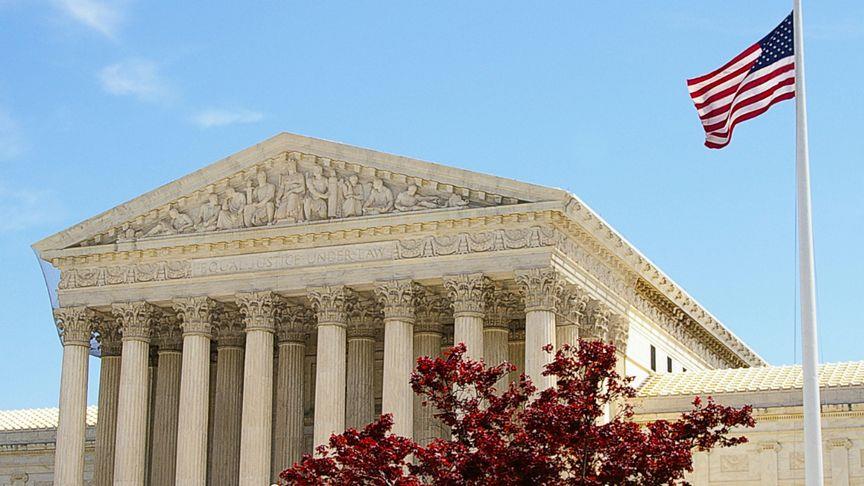"Equal Justice Under Law" – these powerful words, prominently displayed above the main entrance to the Supreme Court Building, serve as an enduring symbol of the Supreme Court's vital role in the United States. As the ultimate guardian of the law, the Supreme Court bears a tremendous responsibility to ensure that the American people are granted the promise of equal justice under the law.
How are Supreme Court justices appointed? Comprised of the Chief Justice of the United States and eight Associate Justices, the Court's composition is determined through a rigorous procedure. The President of the United States nominates individuals to fill these esteemed positions, and their appointments are subject to the advice and consent of the Senate. This meticulous appointment process ensures that only highly qualified individuals are entrusted with the responsibility of upholding justice in the nation's highest court. Presently, the bench includes Chief Justice John G. Roberts, Jr. and Associate Justices Clarence Thomas, Samuel A. Alito, Jr., Sonia Sotomayor, Elena Kagan, Neil M. Gorsuch, Brett M. Kavanaugh, Amy Coney Barrett, and Ketanji Brown Jackson.
Americans should deeply care about the Supreme Court for several compelling reasons. Firstly, the Court's interpretations of the Constitution serve as the legal framework that all other courts and governmental agencies must adhere to. Its decisions have far-reaching implications on various aspects of American life, ranging from civil rights to individual liberties, from corporate regulations to the balance of powers between the federal and state governments. The Court's rulings shape the nation's legal landscape, influencing the course of justice and societal progress.
Furthermore, the Supreme Court acts as the final arbiter of the law, ensuring that the principles of "Equal Justice Under Law" are upheld. Through its adjudicative functions, the Court provides a critical check and balance on the actions of the executive and legislative branches of government. Its role in safeguarding the rights and liberties of individuals is instrumental in maintaining a just and equitable society. Each year, the Court convenes to review thousands of cases, deliberating over matters that impact the lives of countless Americans. Its decisions carry immense weight, shaping the course of the nation's history.
The history of the Supreme Court is rich and deep-rooted in American tradition. Established by the United States Constitution, it began to take shape with the passage of the Judiciary Act of 1789. More than 225 years later, of all the branches of the federal government, the Court bears the closest resemblance to its original form – a testament to its steadfast commitment to justice and the rule of law. As we move forward, the Supreme Court continues to embody the principles of "Equal Justice Under Law," ensuring that the scales of justice remain balanced and accessible to all.
The Supreme Court's jurisdiction extends to all cases, both law and equity, arising under the Constitution, US laws, and treaties. It holds authority over cases involving ambassadors, public ministers, consuls, and controversies between states, citizens, and foreign states. The Court exercises original jurisdiction in cases involving these specific parties, while for all other cases, it has appellate jurisdiction, subject to any exceptions and regulations made by Congress.
In addition to its adjudicative functions, the Supreme Court possesses rule-making power over the procedures of lower courts, thanks to Congress. This power allows the Court to shape and refine the legal processes followed by lower courts, ensuring consistency and fairness in the administration of justice.
 |
| US Supreme Court |
Some of the courts' recent landmark decisions include Dobbs v. Jackson Women's Health Organization (2022), the Supreme Court bravely revisited and overruled the Roe v. Wade (1973) ruling, adjusting the legal perspective on abortion rights. In June 2023, the Court made another significant ruling. This time the case was Students for Fair Admissions, Inc. v. President & Fellows of Harvard College, which focused on whether affirmative action programs in colleges meant to increase diversity, were lawful. The Court said they weren't, reinforcing the importance of individual achievements and merit in college admissions. This decision is seen as a move towards treating all students equally during admissions, without bias or favoritism.
Through its profound influence on the nation's legal landscape, the Court plays a pivotal role in ensuring that "Equal Justice Under Law" is not merely a phrase but a lived reality for all Americans.
